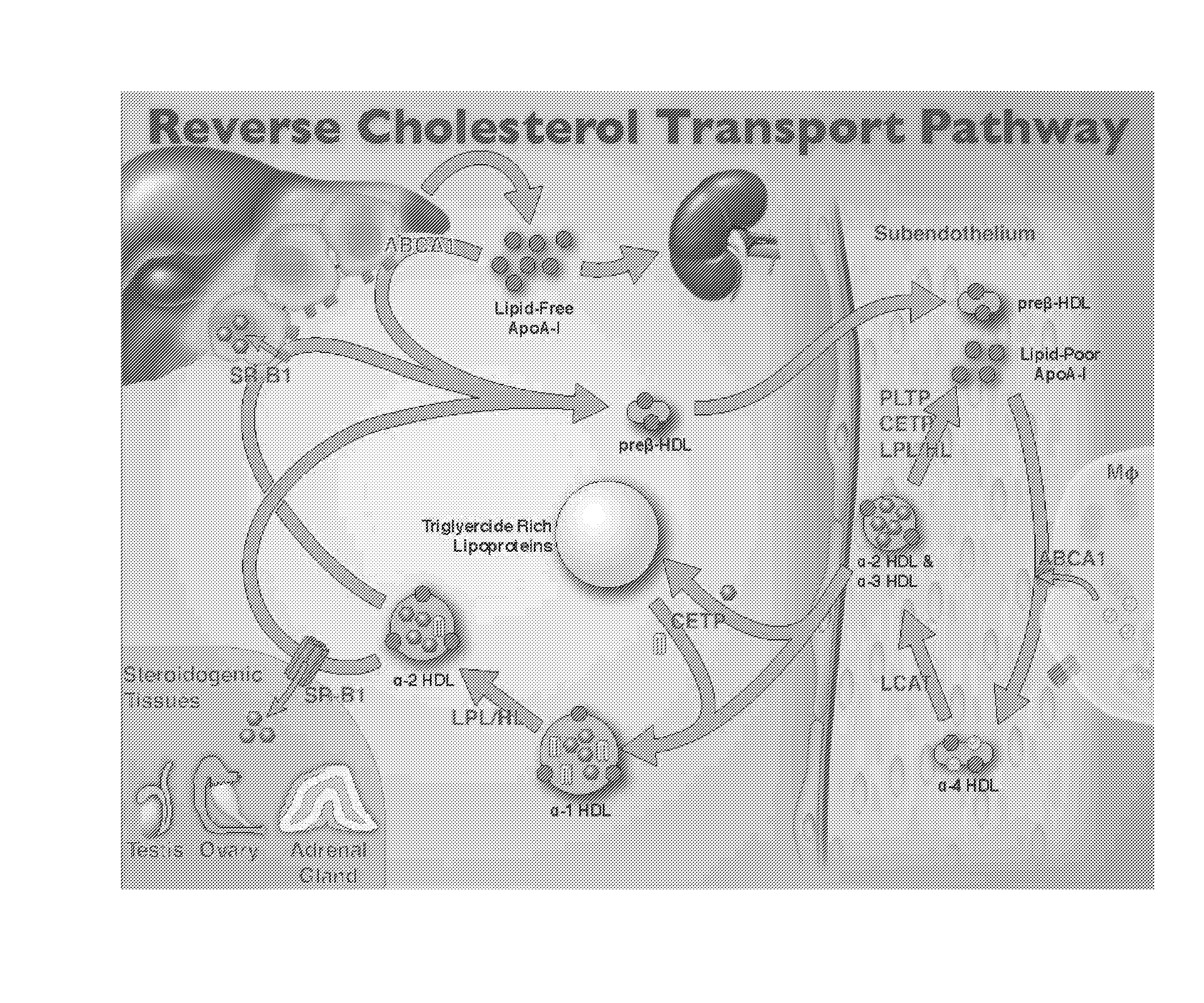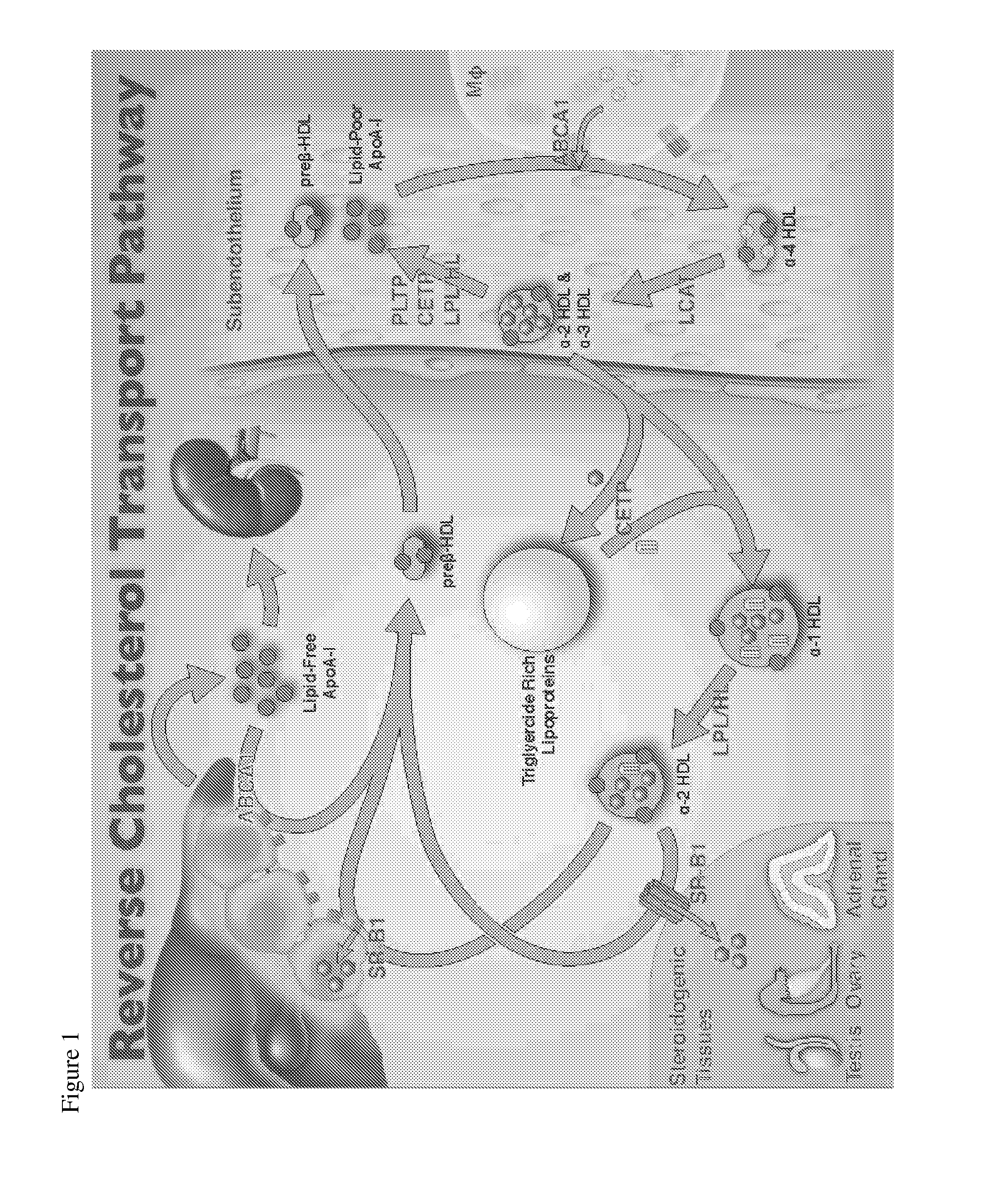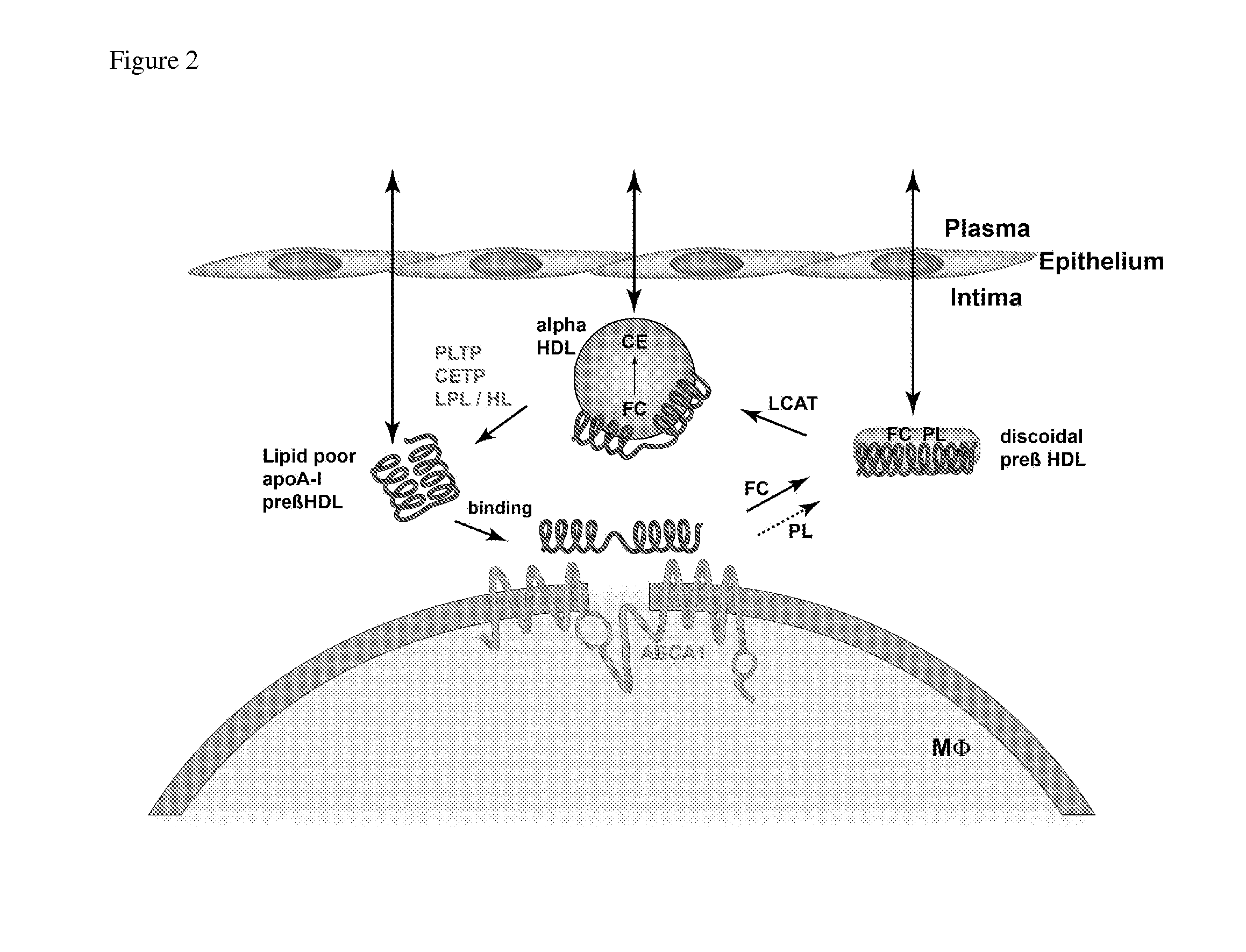Compositions and methods to assess the capacity of hdl to support reverse cholesterol transport
a technology of reverse cholesterol transport and hdl, which is applied in the direction of drug compositions, instruments, metabolic disorders, etc., can solve the problems of abnormally high hdl-c and/or cad, hdl-c levels alone do not provide all the information necessary, and individual hdl-c levels are not good predictors of patients, etc., to achieve and high specificity for hdl
- Summary
- Abstract
- Description
- Claims
- Application Information
AI Technical Summary
Problems solved by technology
Method used
Image
Examples
example 1
Gel-Based Analysis of ApoA-I Binding / Displacement
[0276]ApoA-I is a member of the exchangeable family of apolipoproteins, which is a class of proteins that can migrate from one lipoprotein pool to another and also exit the lipoprotein pool as a lipid-poor protein [50]. The exchange of apolipoproteins between lipoprotein particles is a central element of lipid metabolism. While there is significant evidence that the exchange of apoA-I is a displacement reaction, the direct binding and displacement of apoA-I from HDL particles has not been directly demonstrated. Whether resident apoA-I on HDL could be brought into equilibrium with exogenously added lipid-free / lipid-poor apoA-I was examined. Fluorescent rHDL were generated using an Alexa350 labeled apoA-I variant (labeled at position E136). Different sized rHDL particles (7.8, 8.4 and 9.6 nm) were reconstituted with Alexa350 labeled apoA-I and purified as previously described [51]. The purified rHDL were incubated with unlabeled lipid-f...
example 2
FRET-Based Assay of ApoA-I Exchange
[0277]While gel-based evaluation of apoA-I binding / displacement is informative, the timescale and resolution of this approach is unable to resolve complex differences in binding / displacement kinetics resulting from alterations in oxidation state and HDL particle composition. To address this shortcoming of the gel-based approach, a fluorescence resonance energy transfer (FRET)-based assay was developed based on the apoA-I conformation in lipid-free and lipid-bound states. FRET is a powerful technique that can determine the inter-residue distance within a protein that is useful for deducing the conformational state of a protein if residues are proximal in one conformation and distal in another. The effective range of FRET is 10-75 Å, which is well suited for the dimensions of lipid-free versus lipid-bound apoA-I. Atomic distance is measured by the degree of energy exchange from a donor fluorophore to an acceptor fluorophore. The fluorescence characte...
example 3
Effect of Oxidation on Exchange Rates
[0279]The effect of oxidation by peroxynitrite and MPO on apoA-I's rate of exchange. Lipid-free Trp Null apoA-I was subjected to oxidation by the MPO—H2O2-nitrite system, a potent source of reactive nitrogen species [66]. Lipid-free Trp Null apoA-I was also subjected to oxidation by peroxynitrite. The distinction between these two modes of oxidation is that MPO-mediated oxidation is a potent source of 3-chlorotyrosine and 3-nitrotyrosine, which severely reduce the ability of apoA-I to efflux cholesterol by ABCA1 [28, 30], whereas peroxinitrite oxidation of apoA-I does not lead to a significant decline in apoA-I's ABCA1-mediated efflux capacity [67]. When the effect of peroxynitrite oxidation was tested, no significant differences in the rate of apoA-I exchange were observed (FIG. 5) [38]. In contrast MPO oxidation leads to two populations of apoA-I, one with a normal degree of exchange and a second population (57%) severely impaired in its abilit...
PUM
| Property | Measurement | Unit |
|---|---|---|
| transition temperature | aaaaa | aaaaa |
| concentration | aaaaa | aaaaa |
| concentration | aaaaa | aaaaa |
Abstract
Description
Claims
Application Information
 Login to View More
Login to View More - R&D
- Intellectual Property
- Life Sciences
- Materials
- Tech Scout
- Unparalleled Data Quality
- Higher Quality Content
- 60% Fewer Hallucinations
Browse by: Latest US Patents, China's latest patents, Technical Efficacy Thesaurus, Application Domain, Technology Topic, Popular Technical Reports.
© 2025 PatSnap. All rights reserved.Legal|Privacy policy|Modern Slavery Act Transparency Statement|Sitemap|About US| Contact US: help@patsnap.com



